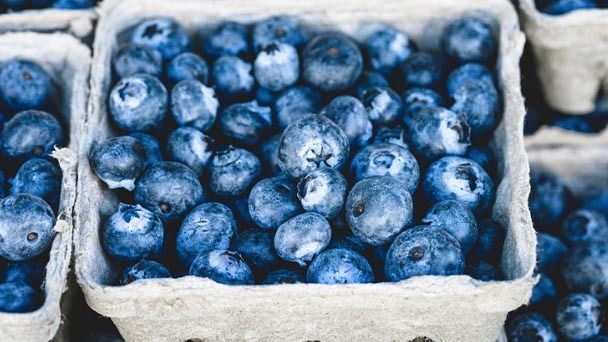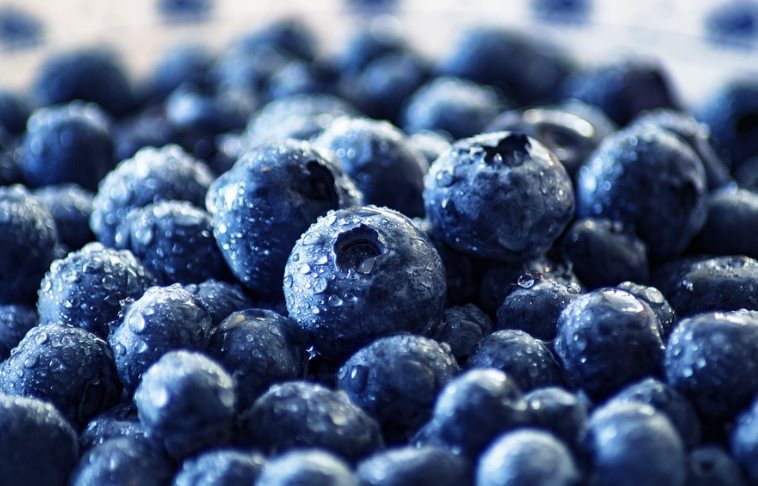Do Blueberries Have Seeds - Something You Probably Didn't Know
Written by Ivy
Dec 29 2022

Blueberries with low and highbush can be found with seeds. Contrary to popular belief, blueberries are not seeds; they are berries. Small seeds can be found inside each blueberry. Blueberry seeds must first be separated from the berries in order to be planted.
There are about 10 to 20 seeds inside each blueberry, so they do have seeds. Since they have a soft texture and a flavor reminiscent of blueberry fruit flesh, many people do not even notice these.
What is a Blueberry?
The genus Vaccinium, which is in the heath family, contains the fruit known collectively as blueberries. They belong to the same family as rhododendrons and cranberries, so you know their family reunion would be a blast!Originally from eastern North America, they are now grown in Australia, New Zealand, and several South American nations. However, their native land is usually eastern North America.
True wild blueberries, like those tiny berries I gave up my sleep for so many years ago, are only to be found in eastern North America.
Blueberries can be found on bushes up to 12 feet tall, though some varieties only grow to 2-4 feet.
The berries turn from green to blue, purple, and eventually black as they ripen. These bushes produce berries as well as long, thin leaves and flowers that range in color from white to red.
There are five main bushes:
- Lowbush
- Northern highbush
- Southern highbush
- Rabbiteye
- Half-high
The majority of plants are highbush varieties, particularly northern highbush. Usually, disease-resistant strains are. In addition to these main five varieties and hybrids, there are undoubtedly many more, but you get the idea.
In order to bear fruit, blueberries need to be chilled. In order for them to mature and bear fruit in May, they must be exposed to temperatures below 45°F. Summer, please pass the hot girl!
They cannot self-pollinate, which is a fun fact about blueberries. They cooperate with bees in a symbiotic way. The nectar that the flowers produce is consumed by the bees in exchange for their pollination of the blueberries.
Do Blueberries Have Seeds?
Yes! They sure do.They are barely noticeable, though. When eating blueberries, we frequently don't even notice the seeds because they are so small and soft compared to other fruits, like mangos.
Surprisingly, a lot of people believe the blueberry is the plant's seed rather than the plant itself. They are, regrettably, a little off because the seed is actually hidden inside the fruit. The more you know!
Is It Safe to Eat the Seeds in Blueberries?
The tasty flesh of a blueberry contains its seeds, which are okay to eat. If you've ever eaten one of these delectable fruits, you've probably also chewed up the seeds. You won't get hurt if you eat blueberry seeds.
The softness of the seeds means that when they pass through humans' stomachs, they won't cause any digestive problems.
There's still more, though. These seeds not only come with plenty of nutrition for us, but they are also safe for us to eat.
This is why blueberries are often referred to as "Superfruits."
Can I Take the Seeds Out?
Yes, but be forewarned—it is not simple.
Blueberries might not be the best choice for you if you have a fruit seed allergy and have to remove them before eating them.
The fruit is left in a completely different form after the seeds are removed (either juice or, well, mush).
It goes without saying that you must first separate your seeds if you intend to replant them.
There are two main methods for removing blueberry seeds:
- Mash and swirl
- Blend and drain
For the "mash and swirl" method, you'll need a fork or potato masher and a large bowl. After mashing your blueberries, put some cold water in a bowl. Add the mashed berry mixture and stir it just a little.
Allow the mixture to sit after swirling. The fleshy mush should float to the top while the seeds, if all goes according to plan, sink to the bottom.
To get to the seeds, skim the mush off the top and drain it. The cold water/swirl procedure might need to be repeated several times if you have a lot of blueberries to completely separate the mush and seeds.
The second technique needs a blender, strainer, bowl, and cheesecloth. For a very, very long time, blend your blueberries at a low speed.
Fill a strainer with cheesecloth and use it as you blend. Pour them into the cheesecloth once they have been thoroughly ground.
The entire assembly—mush, cheesecloth, and strainer—should be placed in a different bowl and allowed to drain for the night. By morning, the juice should be in the bowl and the seeds should still be in the strainer.

How to Grow Blueberries With the Seeds
The inability of blueberries to self-pollinate means that their seeds might not be viable. Consequently, growing a blueberry bush from the seeds of blueberries you buy or grow yourself is not guaranteed.
The only surefire way to grow blueberries right away is to buy from a nursery, but experimenting is also enjoyable!
The seeds must be scarified after you have obtained them using the aforementioned techniques. Say what, now?
Scarifying is the process of making a very small cut to allow water to permeate the seed. After cutting them, wrap them in wet paper towels and freeze them for 90 days.
Now that planting has finally begun! The best way to grow them is to start them indoors and then transplant them outside once they are large enough to survive there. Peat moss is your friend, and don't forget to harden your seedlings, advises a former farmer.
Check out Gardening Know How or UMaine's practical advice if you're looking for a more comprehensive guide.
Oh, and the best wild blueberries are in Maine. If you love blueberries or a beautiful forest, I highly recommend a visit.
How to Transplant Blueberry Seedlings
Keep your blueberry seedlings inside or in a greenhouse once they have been potted until all threat of frost has passed. When it comes time to move the blueberries, pick a location with acidic soil that has a pH of 4.5 to 4.8. The seedlings should be spaced about 3 feet apart, and 2 inches of organic mulch should be applied on top. For the transplants, the mulch supplies nutrients and holds onto moisture.
If any flowers appear on your transplants during the first two years, remove them so that the vegetation can develop sufficiently to support the berries. Every year, prune your young blueberry bushes to remove any broken or dead canes. Since they have shallow roots that are susceptible to drying out, blueberry bushes should be kept moist all summer long.
Do Seedless Blueberries Exist?
There are numerous varieties of blueberries, but they all contain seeds. Because blueberry seeds are already so benign, gardeners haven't really focused on growing seedless blueberries.
It took a lot of work to make bananas into "seedless" plants, but the taste of a banana seed and a blueberry seed is nearly identical.
Because of this, it hasn't been thought to be worthwhile to put the effort into breeding a new, seedless variety of blueberry.
Blueberry Nutrition
Blueberries rose in popularity a few years back after they were labeled a "superfood." What does it mean, though, to be a superfood?
In addition to being a good source of manganese and vitamin A, blueberries are also very high in vitamin C. Because they are sodium-free and high in fiber, they may help lower blood pressure and lower the risk of developing type 2 diabetes. Fiber is beneficial for the health of the gut.
However, their "superfood" label came about due to their antioxidant content! Anthocyanins, the antioxidant that gives blueberries their distinctive color, are abundant in blueberries. This flavonoid may enhance vision and aid in the prevention of diseases. Even short-term memory might profit.
Conclusion
All blueberry plants do, in fact, have seeds. They can be used to create new blueberry bushes if you so choose! The seeds of blueberries are completely safe to eat, even for those who have diverticulosis, so if you prefer to eat them, you don't need to be concerned.
Latest Updated
- Benefits of Bugleweed - 7 Science-backed Health Benefits
- Bugleweed Dangers & Side Effects - Is It Poisonous?
- How to Plant Evergreen Trees - What You Should Know
- When to Plant Evergreens - Grow Guide for Evergreen Trees
- 12 Wonderful Evergreen Shrubs for Your Garden
- 12 Popular Evergreen Plants with Pictures for Beginners
- When And How To Prune A Lilac Bush Like a Pro
- How to Grow & Care for Lilac Vine (Hardenbergia Violacea)
- Japanese Lilac Tree (Syringa Reticulata) Care & Propagation Guide
- Shumard Oak Pros and Cons - What to Know
Popular Articles
- Winter maintenance of Antirrhinum Majus
- How to Grow Terminalia Mantaly Tree
- How to Grow and Care for Crossostephium Chinense
- How to grow Antirrhinum Majus in spring
- Peristeria Elata (Dove Orchid) Profile: Info & Care Guide
- Underwatered Snake Plant (Sansevieria Trifasciata) - Signs And How To Fix
- How to Care for Brazilian Jasmine Plant (Mandevilla Sanderi)
- How to Grow & Care for Graptopetalum Purple Delight in Summer
- Rosa Chinensis (China Rose): Plant Growing & Care Tips
- How to Care for Baby Sun Rose (Aptenia Cordifolia)